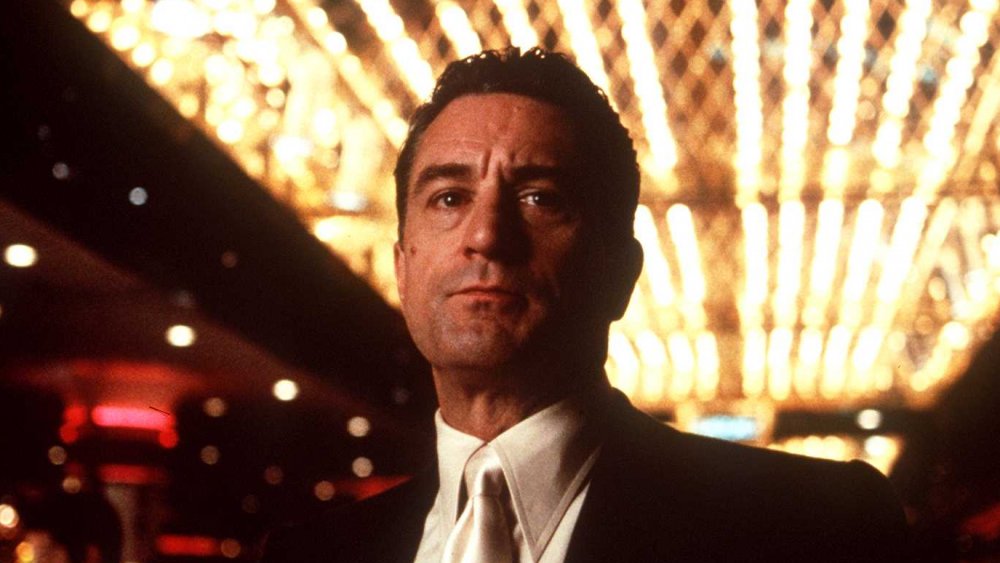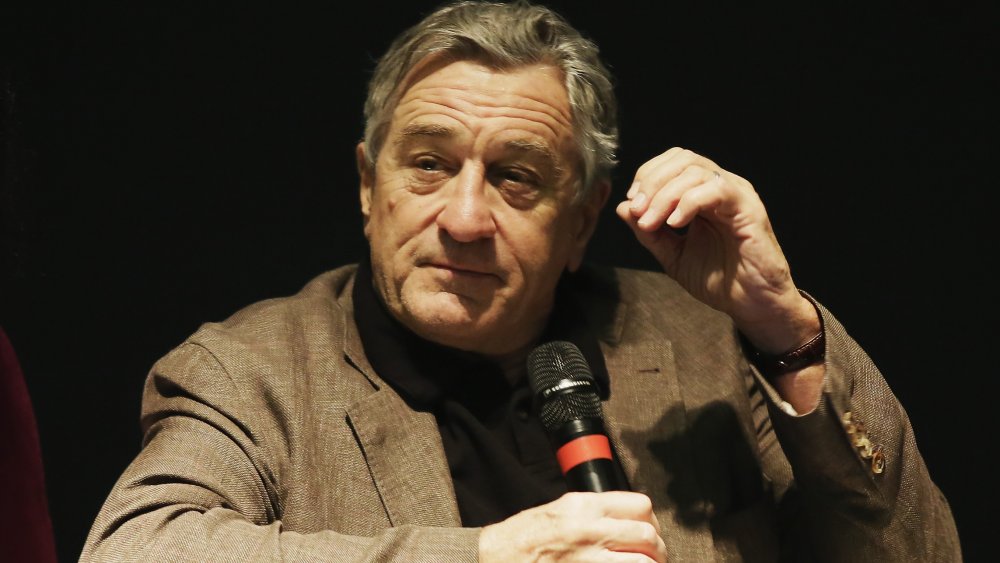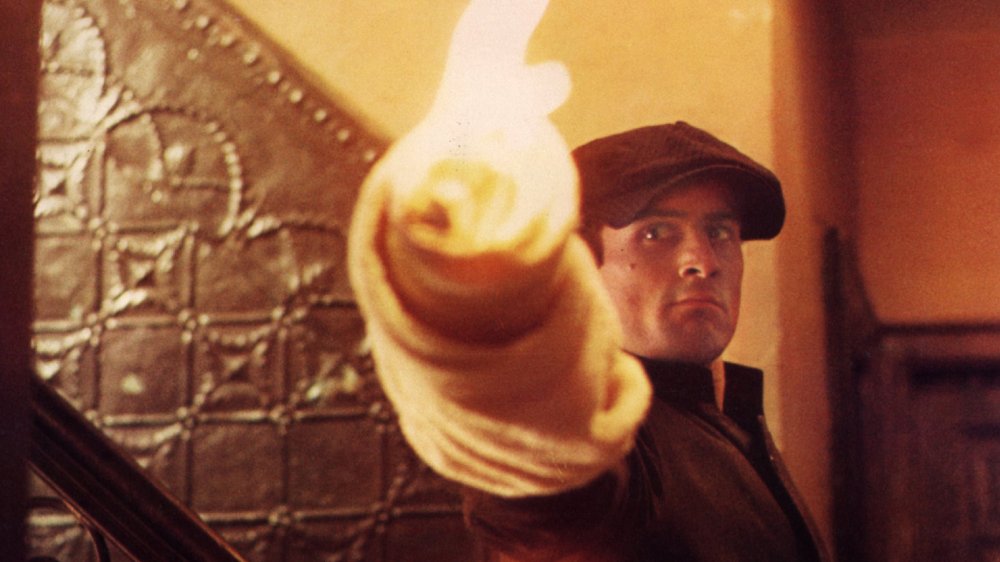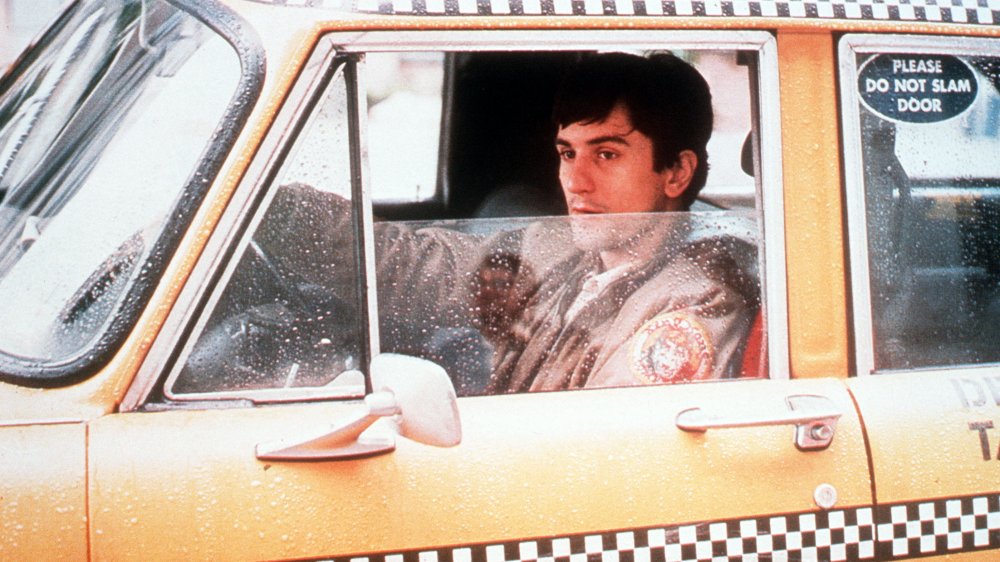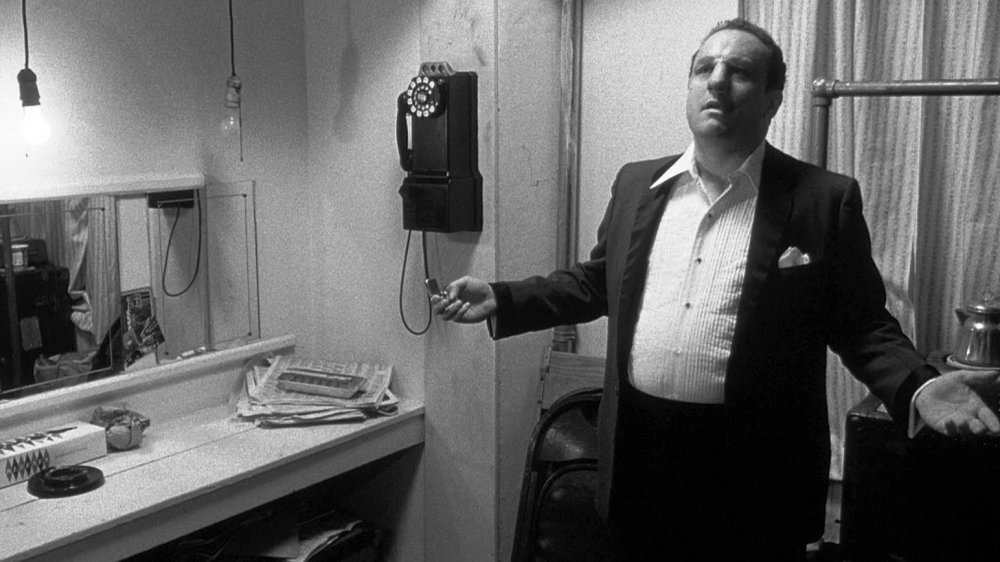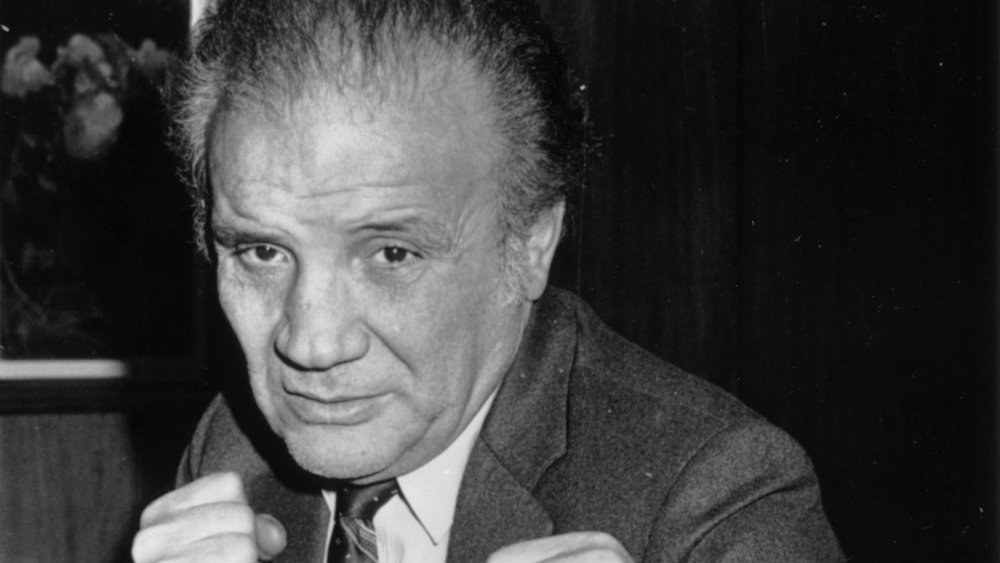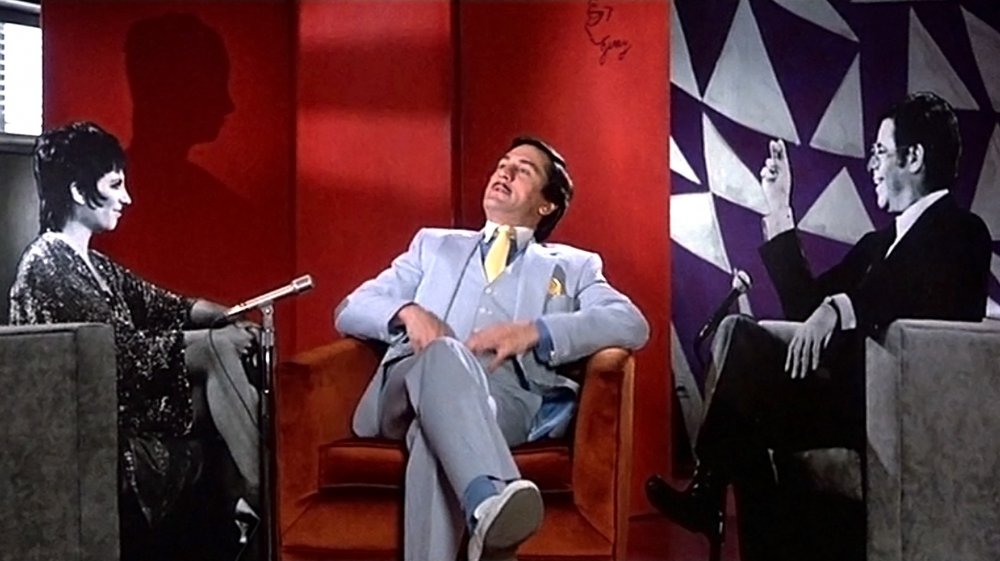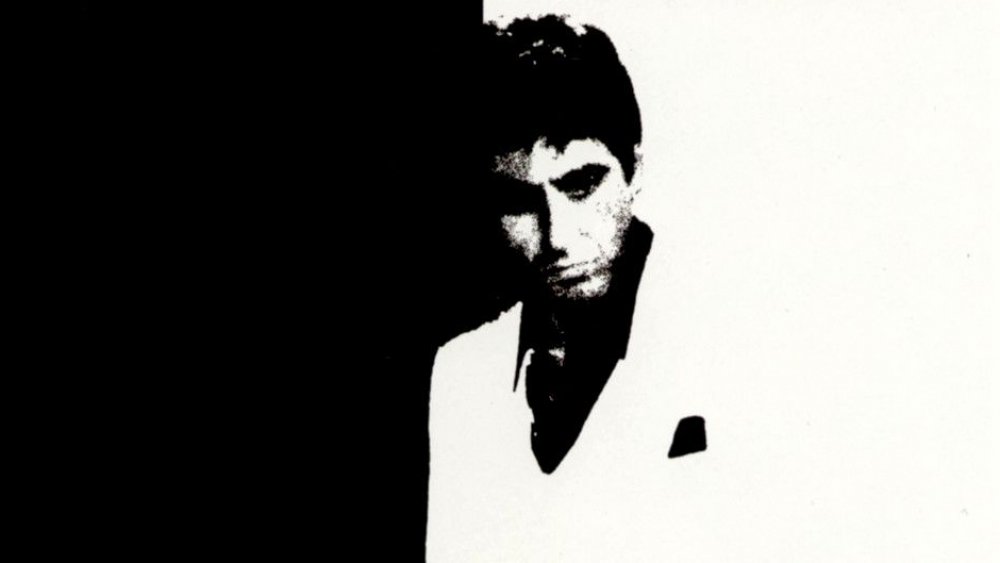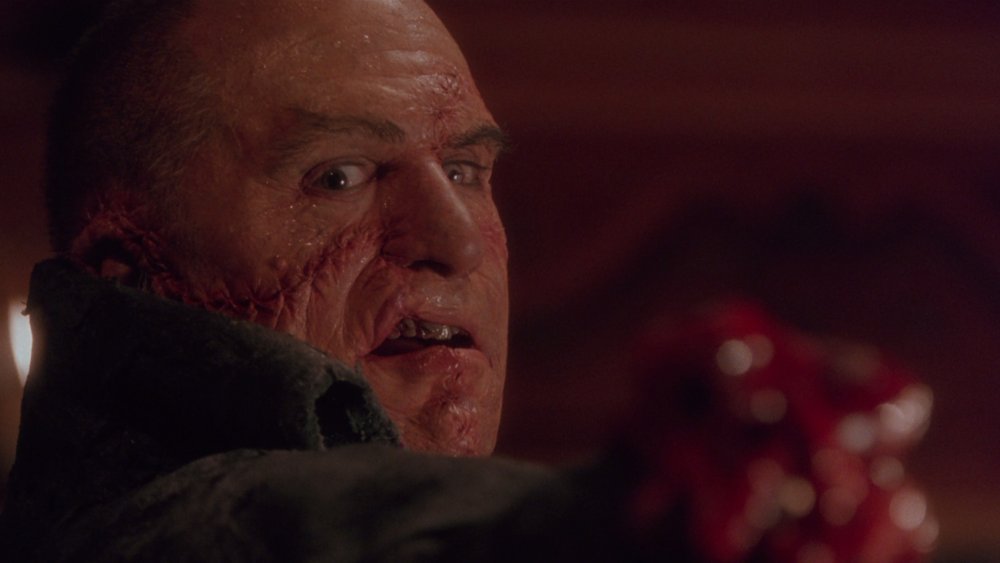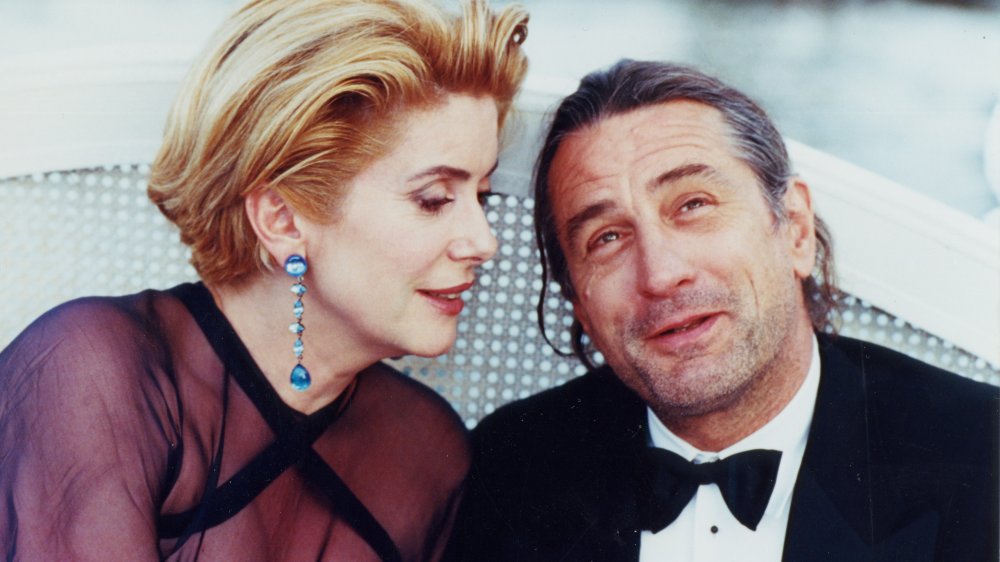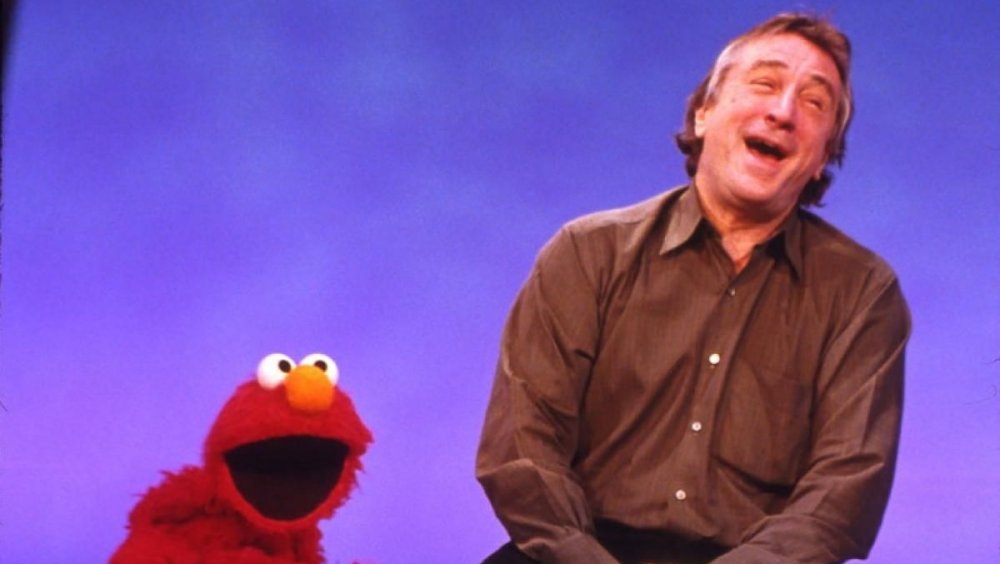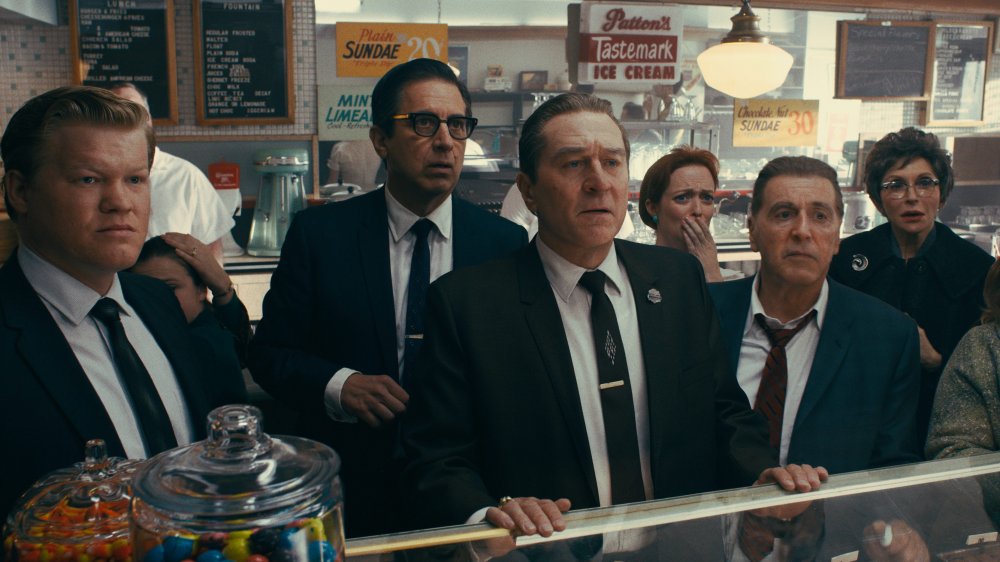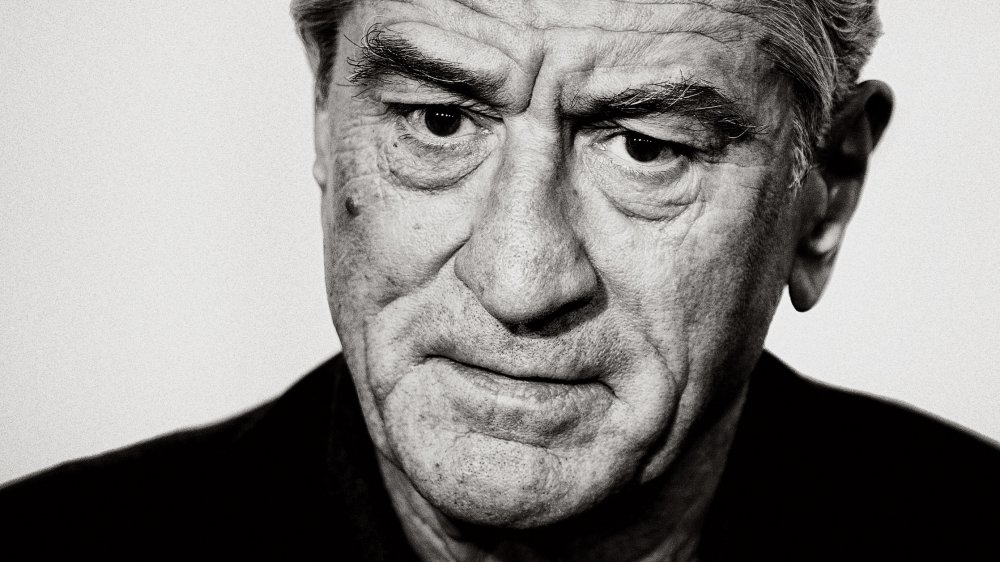What Most People Don't Know About Robert De Niro
Taxi Driver. Raging Bull. Goodfellas. Heat. Casino. The Godfather Part II. Robert De Niro has given some of the most iconic performances of all time in these and over a hundred other movies. For more than half a century, he has embodied unhinged mobsters, calculating villains, and battle-weary heroes. He's been the face of chaotic, youthful energy and of solid old age. He's made nine classic movies with master director Martin Scorsese, from work all the way back at the beginning of Scorsese's career up to 2019's The Irishman. He's worked with dozens of other great filmmakers as well, from Sergio Leone to Quentin Tarantino, in addition to legendary actors including Meryl Streep and Samuel L. Jackson.
Movie lovers around the world have spent hours, if not days, drinking in Robert De Niro's many brilliant performances. But in his long and exciting life, De Niro's done so much that even the most devoted fan simply can't know about it all. We're here to help you know De Niro better, with these little-known details from his epic life.
Art runs in the De Niro family
Robert De Niro has devoted his life to the art of acting, but his father spent his working life devoted to a different artistic pursuit. Robert De Niro Sr. was a celebrated painter of abstract expressionist art that hung in prestigious museums like the Guggenheim. Hollywood's De Niro also got artistic talent from the other side of the family: His mother, Virginia Admiral, met De Niro Sr. in art school. Some of her paintings reside in the permanent collections of New York's Metropolitan Museum of Art and the Museum of Modern Art. Admiral was also a poet, and worked as a typist for Anais Nin. Both of De Niro's parents were closely involved in the art scene of their time, building relationships with legendary talents like Henry Miller and Tennessee Williams.
De Niro Sr. and Admiral divorced when he came out as gay, shortly after De Niro Jr. was born. But the young man remained close with his father: De Niro Sr. designed the menus for one of De Niro Jr.'s restaurants, and De Niro Jr. recently appeared in a documentary on his father's life.
He and Marlon Brando were once the only two actors to win an Oscar for the same role
De Niro toiled in the minor leagues of acting for B-movie super-producer Roger Corman before his big break came in Mean Streets, directed by Martin Scorsese, another Corman alumnus. That caught the attention of Francis Ford Coppola, yet another former Corman director. Coppola was, at the time, making the sequel to his smash hit The Godfather, and he needed an actor who could live up to Marlon Brando's Oscar-winning performance in the original for flashbacks to Vito Corleone's youth.
De Niro proved more than capable of standing alongside Brando, and his sensitive performance as young Vito won him an Oscar of his own. For decades, Brando and De Niro were the only two actors to ever win an Academy Award for playing the same fictional character. That streak was broken in 2020 by Joaquin Phoenix, who won the award for his performance in Joker 12 years after Heath Ledger received posthumous honors for his bone-chilling performance as the supervillain in The Dark Knight. Funnily enough, Phoenix won the Oscar acting opposite De Niro, who played talk show host Murray Franklin.
De Niro really was a taxi driver
Like many actors of his generation, De Niro was a firm believer in method acting. In fact, he studied under Stella Adler, one of the founders of method acting, along with Marlon Brando, who popularized the method on film. The cornerstone of method acting is gaining an in-depth understanding of every character an actor plays. So when it came time to star in Taxi Driver, De Niro didn't skimp on his homework.
To prepare to play Travis Bickle, a New York cabdriver whose loneliness pushes him into a violent killing spree in the climax, De Niro got himself a taxi license and spent some time driving cabs in real life. The low-budget shoot also meant that De Niro didn't have the luxury of pretending to drive on a studio set. As cinematographer Michael Chapman told The Hollywood Reporter, "We were in a real cab, in real New York. We weren't even towing the cab behind any sort of generator truck. It was just Bobby driving the cab through the streets of New York. Marty and I would squat in the back with the [camera] operator shooting over Bobby's shoulder." As you might expect, this caused its share of problems, as De Niro recalled in the same interview: "I remember shooting on 59th and Ninth, and it was very slow, working my way through the traffic."
De Niro "ate his way" through Europe to gain weight for Raging Bull
Raging Bull is one of De Niro's most famous roles, as much for what he did behind the scenes as for what appears on camera. In his fourth collaboration with Martin Scorsese, De Niro plays Jake LaMotta, a successful boxer from the 1940s whose total lack of impulse control destroys his career, his life, and his health. That last one wasn't just acting: De Niro famously gained over 60 pounds to film his scenes as the older LaMotta.
It was a painful process that took a toll on his health — but it wasn't all bad. In Scorsese on Scorsese, the director revealed that De Niro took advantage of the opportunity to "eat his way around Northern Italy and France." But even working his way through some of the world's best food couldn't make the process painless: Scorsese went on to say, "He said it was hard to get up in the morning and force yourself to have breakfast, then lunch, then dinner." But all that effort paid off: Raging Bull earned De Niro his second Oscar.
He trained to play Jake LaMotta with the man who knew him best
Raging Bull took its story from real life, rooting itself in Jake LaMotta's autobiography of the same name. De Niro applied the method approach to this performance, consulting with LaMotta himself to ensure he portrayed the boxer accurately. De Niro's commitment to authenticity also meant learning to box in real life, and LaMotta helped train him. The boxer was 55 at the time, but he was still more than tough enough to whip the younger actor into shape. "He would say, 'Hit me, don't worry, don't worry,'" De Niro recalls. "He was 55, but he was really tough. I didn't realize until I got to his age that you could still take a punch."
Raging Bull was a tough watch for Jake LaMotta. He told boxer Joe Egan that he "didn't particularly like the film" since it shows the darkest moments of his life in such detail. Regardless, he was still a fan of De Niro's performance. Irish talk show host Terry Wogan told De Niro in a 1991 interview that the champ was especially impressed with De Niro's boxing skills: "LaMotta said that watching you box — I think that's right, he said you could have been a contender."
De Niro based his character in The King of Comedy on a mannequin
The King of Comedy, another De Niro and Scorsese collaboration, takes the madness and loneliness of Taxi Driver and plays it for laughs. De Niro plays Rupert Pupkin, an obsessive wannabe comedian whose greatest dream is to be recognized by his favorite TV star, Jerry Langford, played by real-life comedy legend Jerry Lewis. Pupkin eventually hatches a plot to kidnap Jerry and take over his show. Unfortunately, The King of Comedy failed to hit it off with contemporary audiences, but moviegoers have come to appreciate the movie's twisted hilarity as years have gone by. Most prominently, it acted as a major influence on Joker, which features De Niro in the Jerry Lewis role.
De Niro found his inspiration for playing the frighteningly camera-ready Pupkin in an unlikely place. "Marty and I saw this mannequin on Broadway," he told Ian Haydn Smith at the BFI London Film Festival in 2019, "but it had these kind of clothes, these very flashy, Vegas-type clothes ... with the suit and everything, the guy's hair, everything. We went in, me and Bruno and Marty went in, looked at it, picked it, and just took it. Took the whole thing! Not the mannequin, I wish we did, because we could have kept that ... Even the hairstyle on the mannequin, we just did the whole thing."
He's the reason Scarface got made
From The Godfather Part II to Goodfellas to Heat, it seems like De Niro's been in almost every classic gangster movie. One of the few De Niro-free classics of the genre is Brian De Palma's 1983 hit, Scarface – but De Niro almost appeared in that one too.
De Niro and Scorsese had been considering pursuing their own remake of Howard Hawks' classic gangster movie before Al Pacino took the role. In Pacino and De Niro's conversation for GQ, they revealed that De Niro played a large part in getting Pacino the part, which ended up shaping the path of his career in a major way. "We were talking about Scarface," De Niro remarked to Pacino, "and you were considering who to do it, what director, and I was saying, 'You should really do it with Brian, of the choices that you had. And I said, 'If you don't do it, I'm going to do it!'"
De Niro's insight turned out to be essential to Scarface's success. Brian De Palma wasn't an obvious choice: At that point in his career, he was known for weird thrillers like Carrie and Sisters and idiosyncratic films like the surreal glam-rock musical, Phantom of the Paradise. But De Niro had known De Palma from the very beginning of his career, and his advice took Pacino to one of his biggest hits.
De Niro played Frankenstein
De Niro's been associated with all kinds of iconic roles in his career. But when he got the chance to put his own spin on one of the most legendary characters in movie history, it was almost immediately forgotten. In 1994, De Niro followed in the footsteps of Boris Karloff, Bela Lugosi, and Christopher Lee as the monster in Kenneth Branagh's Mary Shelley's Frankenstein. Intended as a companion piece to Francis Ford Coppola's Bram Stoker's Dracula, Frankenstein is a similar attempt at retelling a classic horror story as a historical epic, drawing more from the original text than the dozens of previous movie versions.
In keeping with Branagh's previous Shakespeare adaptations, Mary Shelley's Frankenstein was marketed as a literary and cerebral kind of adaptation. But even though it's short on jump scares, Branagh's soap-operatic adaptation isn't exactly what you'd call subtle, either. When Monty Python's John Cleese gives the most restrained performance (as Victor Frankenstein's mentor), you know something's up. The reviews were merciless, deeming it melodramatic and dull. If it didn't have much impact on De Niro's public image, maybe that's because he doesn't get much to do in it: Frankenstein doesn't even bring him to life until 45 minutes in. Still, his performance, along with the gorgeous photography and set design, is still excellent.
He's acted in French
De Niro stretched his acting skills into a whole new language in Agnés Varda's One Hundred and One Nights. In the '60s, Varda had been one of the leaders of the revolutionary French New Wave, which redefined filmmaking. But in One Hundred and One Nights, Varda looks backwards. This film follows the adventures of a century-old man named Simon Cinema, who might just be the spirit of cinema itself, alongside an all-star cast of some of the greatest living actors of the time, including Clint Eastwood, Harrison Ford, and, of course, Robert De Niro.
The star speaks both French and English in his brief appearance in one of the movie's most surreal interludes. He takes a "cruise" in a swimming pool with New Wave star Catherine Deneuve, and their swan boat transforms the scene from night to day every time it bumps against the edge. It's certainly one of his lesser-known appearances, but One Hundred and One Nights is still a must-see for fans of De Niro and, really, movies of all kinds. Every scene is crammed with beautiful design work and cinephile in-jokes, including so many puns, it's unlikely the subtitles were able to catch them all.
De Niro starred opposite Elmo on Sesame Street
The physical and emotional violence in most of De Niro's movies is far from kid-friendly, but he star still took a moment in 2001 to talk with his littlest fans on Sesame Street. In this sketch, he has a conversation with Elmo that teaches kids about acting. As he explains, "An actor uses his imagination to pretend he's somebody else." He proceeds to demonstrate the craft by asking Elmo to suggest somebody he could pretend to be. Elmo asks him to play a dog, and De Niro obliges, actually transforming into a Muppet puppy! We also get to see him play a cabbage and Elmo himself. You might balk at this, but really, after seeing him vividly embody so many different characters, is it really that much of a stretch to imagine him as an adorable furry puppet?
This episode is a great introduction to De Niro and the art form he's devoted his life to. And even the most jaded adult viewer should still get a kick out of hearing the two-time Oscar winner dryly say, "Hey, look at me, I'm a cabbage. Great source of riboflavin."
He had a movement coach to make sure he was "age appropriate" in The Irishman
De Niro's getting older nowadays, but he still seeks out new challenges. One great example is 2019's The Irishman, a generations-spanning epic which uses the latest CGI technology to allow De Niro, Pacino, and other actors to play their characters from youth through old age. Most critics agree De Niro rose to the challenge with one of his best performances in years, but they still note that his body language occasionally betrays his age, despite the visual effects. In an interview with Screen Actors Guild president Gabrielle Carteris, De Niro revealed he took the criticism to heart, and in fact took special care on set to make his performance as believable as it is.
"We had a movement coach there," he explained, "tapping us on the shoulder when we were not being age-appropriate — you know, 'You're 39 now, so sit up' or whatever." But De Niro's still humble enough to reflect on his occasional slip-ups, adding, "I wish I had been more proactive about that part of it because I took that for granted."
He considered playing himself
Robert De Niro once expressed interest in a script that would have put him in a role he has intimate experience with — the role of Robert De Niro. In conversation with Gabrielle Carteris, she asked if he had ever turned down a role because its darkness would reflect badly on him. He had a surprising answer, revealing he'd once been up for the role of himself in a movie about an obsessive fan trying to meet him.
De Niro said that he's still open to playing the part, but he'd want to make sure he'd have some input into how he'd portray himself. "I look and I say, 'Well, I wouldn't say that, but I would say this,' so maybe there's something here that's worth exploring ... And I wanted to go over the scenes and talk to the director to get more close to what it would be with me: I would say this, or how about we do this?" Hopefully the director would be willing to trust De Niro's expertise on himself.
